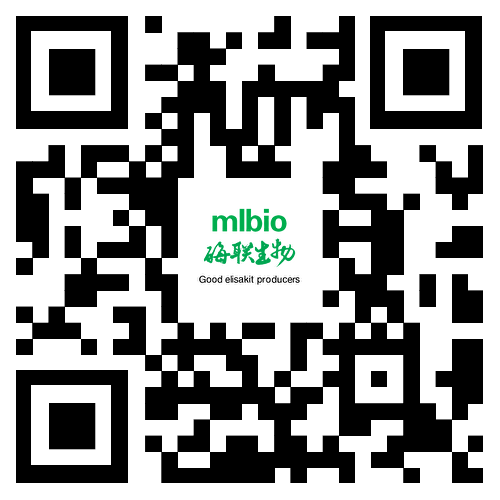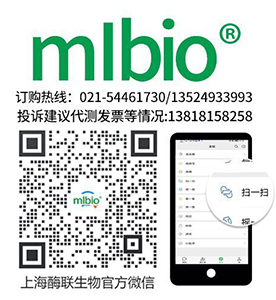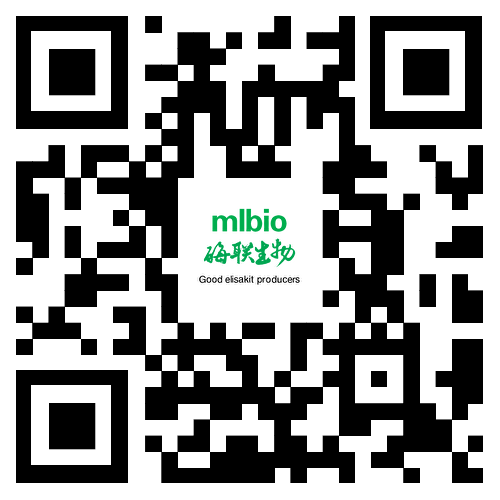產品貨號 : mlR10239
英文名稱 : phospho-ROCK1 (Thr455+Ser456)
中文名稱 : 磷酸化Rho相關蛋白激酶1抗體
別 名 : p-ROCK1(Thr455/Ser456); p160 ROCK1; p160ROCK; Renal carcinoma antigen NY REN 35; Rho associated coiled coil containing protein kinase 1; Rho associated protein kinase 1; Rho-associated coiled-coil containing protein kinase 1; ROCK1_HUMAN.
產品類型 : 磷酸化抗體
研究領域 : 信號轉導 激酶和磷酸酶
抗體來源 : Rabbit
克隆類型 : Polyclonal
交叉反應 : Human, Mouse, Rat, Pig, Cow, Horse,
產品應用 : ELISA=1:500-1000 IHC-P=1:400-800 IHC-F=1:400-800 ICC=1:100-500 IF=1:100-500 (石蠟切片需做抗原修復)
not yet tested in other applications.
optimal dilutions/concentrations should be determined by the end user.
分 子 量 : 158kDa
細胞定位 : 細胞漿
性 狀 : Lyophilized or Liquid
濃 度 : 1mg/ml
免 疫 原 : KLH conjugated synthesised phosphopeptide derived from human ROCK1 around the phosphorylation site of Thr455+Ser456:CR(p-T)(p-S)NI
亞 型 : IgG
純化方法 : affinity purified by Protein A
儲 存 液 : 0.01M TBS(pH7.4) with 1% BSA, 0.03% Proclin300 and 50% Glycerol.
保存條件 : Store at -20 °C for one year. Avoid repeated freeze/thaw cycles. The lyophilized antibody is stable at room temperature for at least one month and for greater than a year when kept at -20°C. When reconstituted in sterile pH 7.4 0.01M PBS or diluent of antibody the antibody is stable for at least two weeks at 2-4 °C.
PubMed : PubMed
產品介紹 : The protein encoded by this gene binds copper and zinc ions and is one of two isozymes responsible for destroying free superoxide radicals in the body. The encoded isozyme is a soluble cytoplasmic protein, acting as a homodimer to convert naturally-occuring but harmful superoxide radicals to molecular oxygen and hydrogen peroxide. The other isozyme is a mitochondrial protein. Mutations in this gene have been implicated as causes of familial amyotrophic lateral sclerosis. Rare transcript variants have been reported for this gene. [provided by RefSeq, Jul 2008]
Function:
Destroys radicals which are normally produced within the cells and which are toxic to biological systems.
Subunit:
Homodimer; non-disulfide linked. Homodimerization may take place via the ditryptophan cross-link at Trp-33. The pathogenic variants ALS1 Arg-38, Arg-47, Arg-86 and Ala-94 interact with RNF19A, whereas wild-type protein does not. The pathogenic variants ALS1 Arg-86 and Ala-94 interact with MARCH5, whereas wild-type protein does not.
Subcellular Location:
Cytoplasm. Note=The pathogenic variants ALS1 Arg-86 and Ala-94 gradually aggregates and accumulates in mitochondria.
Post-translational modifications:
Unlike wild-type protein, the pathogenic variants ALS1 Arg-38, Arg-47, Arg-86 and Ala-94 are polyubiquitinated by RNF19A leading to their proteasomal degradation. The pathogenic variants ALS1 Arg-86 and Ala-94 are ubiquitinated by MARCH5 leading to their proteasomal degradation.
The ditryptophan cross-link at Trp-33 is responsible for the non-disulfide-linked homodimerization. Such modification might only occur in extreme conditions and additional experimental evidence is required.
DISEASE:
Defects in SOD1 are the cause of amyotrophic lateral sclerosis type 1 (ALS1) [MIM:105400]. ALS1 is a familial form of amyotrophic lateral sclerosis, a neurodegenerative disorder affecting upper and lower motor neurons and resulting in fatal paralysis. Sensory abnormalities are absent. Death usually occurs within 2 to 5 years. The etiology of amyotrophic lateral sclerosis is likely to be multifactorial, involving both genetic and environmental factors. The disease is inherited in 5-10% of cases leading to familial forms.
Similarity:
Belongs to the Cu-Zn superoxide dismutase family.
SWISS:
Q13464
Gene ID:
6093
Important Note:
This product as supplied is intended for research use only, not for use in human, therapeutic or diagnostic applications.
產品圖片












